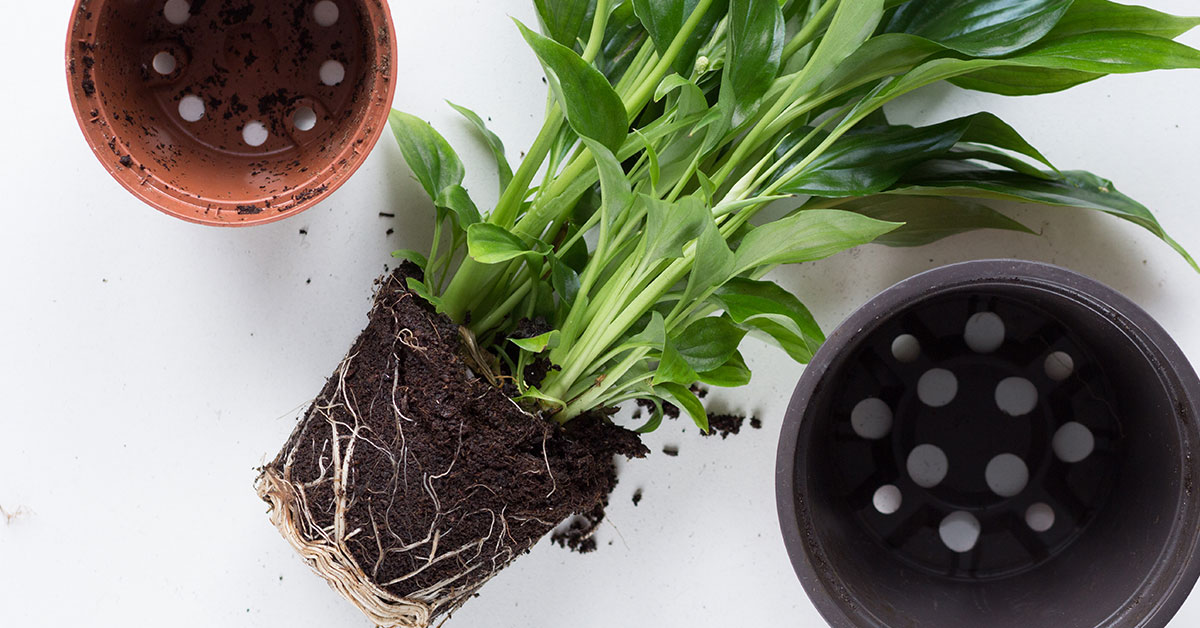I’ve heard it time and time again: my peace lily is getting way too big, how do I go about dividing a peace lily? Peace lilies are an evergreen, tropical plant that, in the wild, thrives growing on the forest floor. In captivity, they thrive simply as house plants. Peace lilies are a favorite of indoor gardeners because of how no-fuss they are and, of course, their showy white or pink flowers that stand in stark contrast to their deep, dark green foliage.
But there are two problems that most indoor gardeners have with peace lilies. The first is their size: they can get absolutely huge! Some varieties of peace lily will grow 4 feet tall and 6 feet wide. That’s a pretty prohibitively large plant for most residences I’d say. The second problem is that you just can’t have enough of these plants. So what do we do to fix both issues? Divide our peace lilies. Let’s get into it.
5 steps to dividing a peace lily
Cleaning your tools should be the first step you take before dividing your peace lily. Sometimes, peace lilies can be divided by hand, but extremely large plants may need to be cut apart. It’s totally fine to cut through the roots of your peace lily, it should be able to recover from it. To disinfect your tools, simply wash them with soap and water to get any grime or dirt off, dip them in rubbing alcohol, and allow to air dry. Once you’ve done that disinfection protocol, you’re ready to go.
Next, remove the peace lily from its pot. Take a moment and carefully inspect the roots of your peace lily. Does it appear to be experiencing any root rot? Are any of the roots dead? Is it intensely root bound or is there still some loose soil in the pot? If there are any roots that appear to have died, take your shears or knife and carefully cut away these dead roots.
Now carefully break up the roots and soil, helping the soil to fall away from the roots of your peace lily. You don’t need to completely remove all of the soil, but you do want to get a feel for where each individual lily stem meets the root system. You should be able to gently and carefully peel away a handful of new, individual lily chutes and their small root systems by hand. This isn’t always possible though, especially if the plant is very large and very root bound.
If your plant is large and root-bound, you’ll need to cut through the roots with a large, disinfected knife. Don’t worry, cutting some of the roots won’t likely hurt the plant, although you may wind up sacrificing one or two peace lily chutes in the process. If you have a very large plant, you should be able to get a lot of new lilies, so don’t worry. Once you have cut through some of the roots, follow the above step to gently liberate some of the new lilies by hand.
Finally, repot your new peace lilies using high-quality, organic tropical plant potting soil for indoor tropical plants. Select pots that are larger than the existing root ball for your lily plant, but not excessively large. Carefully plant your lily with the base of the plant, where the stem meets the roots, perfectly even with the top of the soil. Provide a thorough watering and place your lily in a bright location.
Care after transplanting
Peace lilies are hardy plants. After dividing a peace lily, you probably won’t need to do all that much to meet its needs. The division is an intense shock for a plant though, and you’ll likely see your peace lily wilt and struggle for days or weeks after dividing it. That’s fine and normal, it will almost certainly bounce back. Take care that you provide your peace lily with adequate water and bright light, and for the most part, don’t touch it or move it around.













